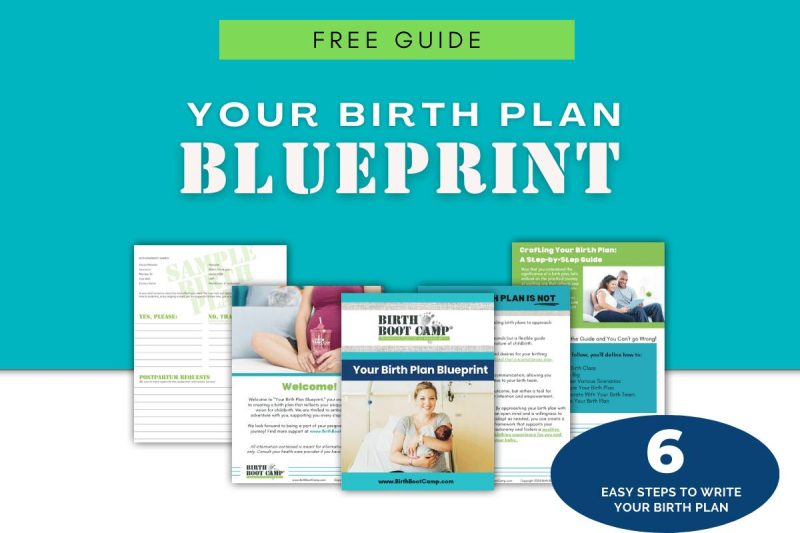Low Amniotic Fluid Levels
About 4% of women will be diagnosed as having low amniotic fluid levels. The diagnosis of low fluid levels can bring feelings of worry and many questions about what this means for the mom and her baby. Each couple deserves to better understand this important diagnosis and how it can impact their pregnancy and birth.
Low fluid levels, also known as oligohydramnios, is diagnosed in two different ways. The amniotic fluid index (AFI) or single deepest pocket (SDP) method. While both have some level of inaccuracy, studies currently support the use of the single deepest pocket method, finding that using AFI increases interventions such as induction and cesarean without improving maternal outcomes.
It is normal to have some lowering of amniotic fluid levels towards the end of pregnancy, even for the healthiest of pregnancies. Despite the normality of dropping levels, there can be worry surrounding this subject. This is partially due to the fact that measurements below a certain level are a cause for concern and indication of a real problem. In addition, while low levels are considered a problem, there is even disagreement on what is truly low and what is normal.
In childbirth and pregnancy, knowledge is power. It is helpful for women to know what levels are considered dangerous, what causes it, and if anything can be done to prevent low amniotic fluid levels.
Is Measurement of Amniotic Fluid Levels Accurate?
Technology used during pregnancy is an amazing tool that can help prevent and treat many problems overlooked in days past. But is the technology used to determine amniotic fluid levels accurate? A Cochrane Review found that, “The accurate assessment of amniotic fluid volume by ultrasonography can be influenced by an inexperienced operator, fetal position, the probability of a transient change, and the different ultrasound diagnostic criteria of an abnormal volume.”
Doctors often use the amount of amniotic fluid around a baby to measure health in the womb, believing that low fluid levels late in pregnancy indicate baby is endangered because it is not getting enough maternal blood. Johns Hopkins investigators compared outcomes of 131 babies with low levels of fluid with an equal number of babies in the normal range. Obstetrician Ernie Graham said, “Then we looked at the maternal demographics, we looked at the outcomes of the babies, and we found that the fluid measurements weren’t very predictive of babies that later had problems.””
While the technology used to determine fluid levels is amazing, it may not be as foolproof as we like to think. In fact, many factors can influence findings, including: experience of your ultrasound tech, the position of your baby, and the amount of fluids consumed by the mother. In addition to these factors, some studies have found that amniotic fluid levels are not predictive of either good or bad fetal outcomes.
Can Low Amniotic Fluid Levels Be Fixed?
Studies have found that drinking water has been shown to increase fluid levels. In fact, drinking water plentifully for a solid week has been shown to increase levels by a few points. This is one reason why so many people, from your OB to your mother-in-law, will encourage you to get adequate fluids during pregnancy. Low amniotic fluid levels can sometimes be reversed with proper hydration.
Amniotic fluid can even be replaced after water has broken. Rachel Reed, a midwife mentions in this post that, “The amniotic fluid is constantly being produced and renewed : Baby swallows the fluid; it is passed through the gut into the baby’s circulation; then sent out through the placenta. This process continues even if the amniotic membranes have broken. So, even when the waters have ‘gone’ there is still some fluid present ie, there is no such thing as a ‘dry labour’.” Rachel’s quote is significant because we often think of fluid levels as being irreplaceable, but this is not the case. Hydration and understanding the mechanism of renewal of amniotic fluid is helpful in relieving stress.
While low amniotic fluid levels can be indicative of a problem and a cause for concern, they can also sometimes be normal, reversed with simple hydration, or misdiagnosed. As with any issue during pregnancy, the need for a qualified and trusted provider is paramount. A great provider can help guide and counsel you through any surprises that arise during pregnancy, including low fluid levels. Eat well, hydrate, exercise, and prepare yourself for an amazing birth.
Take control of your birth experience with our Birth Plan Blueprint. Your essential guide to creating a birth plan that reflects your unique journey and vision for childbirth.










